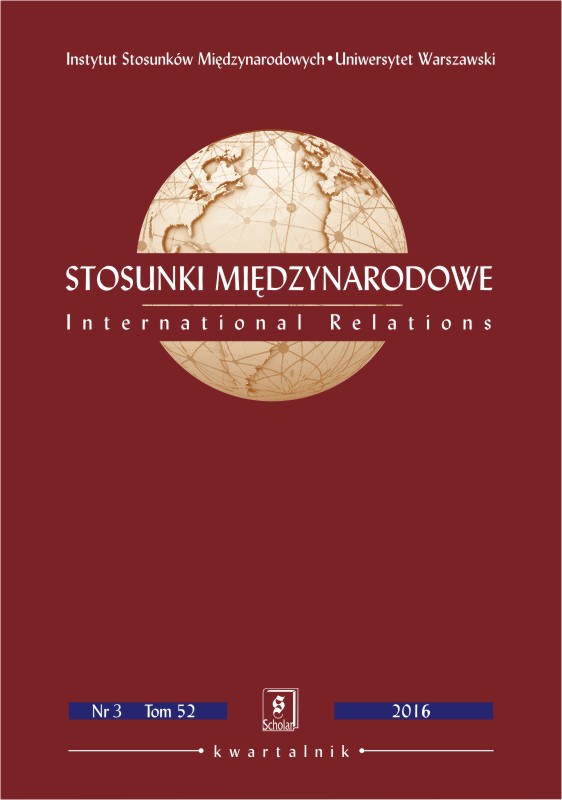Przesłanki i bariery interwencji humanitarnej na przykładzie Libii (2011) i Syrii (2013)
REASONS FOR AND BARRIERS TO HUMANITARIAN INTERVENTION ON THE EXAMPLE OF LIBYA (2011) AND SYRIA (2013)
Author(s): Arkadiusz DomagałaSubject(s): Politics / Political Sciences, Politics, Economy, Political Theory, Political Sciences, Inter-Ethnic Relations
Published by: Wydawnictwo Naukowe Scholar Sp. z o.o.
Keywords: humanitarian intervention; the Arab Spring; use of force, serious and mass violations of human rights; intervention in Libya; civil war in Syria
Summary/Abstract: The article presents a simple model explaining the actions of potential interveners in a situation of serious and mass violations of human rights. In this model, the key factor in making a decision to launch a humanitarian intervention are not the criteria of just war but the prospect of success defined as a complex of determinants facilitating the achievement of humanitarian effects with minimum losses for the intervener. The article points out the relation between the execution of the operational goals of an armed intervention and the probability of a decision to launch a humanitarian intervention. On the basis of a critical literature review and the history of enforcing the observance of human rights after 1991 it identifies the conditions that, when combined, determine high probability of success of a humanitarian mission: (a) the power of the potential intervener; (b) the reaction strategy for neutralising the potential enemy; (c) the possibilities of precisely defining goals in political and humanitarian terms; (d) the climate, environment, geographic and infrastructural conditions favouring the interveners; (e) effective use of the intervener’s logistic resources; (f) the intervener’s determination in pursuing the objective; (g) a clear political situation understood as the existence of a consolidated opposition to the central authority as the party that violates human rights; (h) the extent of connections under international law and political relations of the country subject to the intervention; (i) the legitimacy of the intervener’s actions; (j) the intervener’s coherence. An analysis of the above conditions on theexample of the situation in Lybia (2011) and Syria (2013) offers an explanation as to why it was decided to intervene in Libya while no operations were launched in Syria. Particularly important among the conditions increasing the prospect of success are: the presence of a local ally of the potential intervener, who opposes the human rights violator and has the potential for effective political and military action when supported by the intervener.
Journal: Stosunki Międzynarodowe
- Issue Year: 52/2016
- Issue No: 3
- Page Range: 155-174
- Page Count: 19
- Language: Polish

